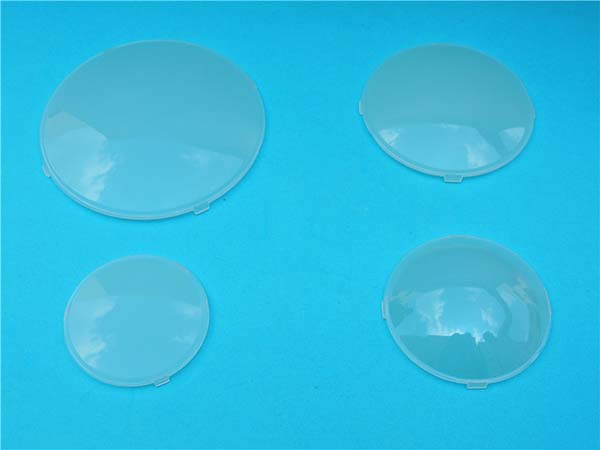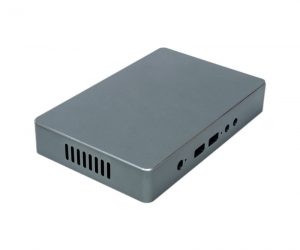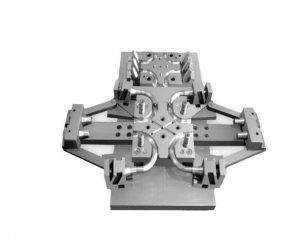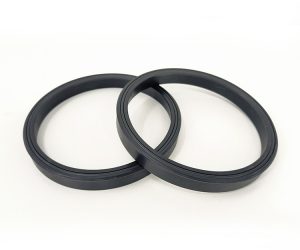Definition and Basic Concept of Transparent Bakelite Sheet
A transparent bakelite sheet, also known as a transparent phenolic plastic sheet, is a type of thermosetting plastic material. It is primarily composed of phenolic resin, which is formed through the polymerization of phenol and formaldehyde under specific conditions. This resin serves as the binder in the material, providing the basic structure and integrity. Additionally, various additives such as fillers, modifiers, and curing agents are incorporated to enhance its properties.
Phenolic resin is a significant class of synthetic polymers. In the case of transparent bakelite sheets, the choice of raw materials and the manufacturing process are carefully controlled to achieve transparency while maintaining the excellent characteristics of phenolic plastics. Unlike some other plastics, once the phenolic resin in a transparent bakelite sheet is cured, it forms a cross - linked, three - dimensional network structure. This structure gives the material its characteristic heat resistance, dimensional stability, and chemical resistance.
In the classification of plastic materials, transparent bakelite sheets belong to the category of thermosetting plastics. Thermosetting plastics, unlike thermoplastics, undergo an irreversible chemical change during the curing process. Once cured, they cannot be remelted and reshaped by heating, which is a crucial factor in their applications where high - temperature stability and long - term durability are required.
Application Scenarios of Transparent Bakelite Sheet
Electronics Industry
- Specific Applications:
- Electronic Device Shells: Transparent bakelite sheets are increasingly used in the production of electronic device shells. For Yigu Technology example, some high - end smartwatch casings utilize transparent bakelite sheets. The transparency of these sheets allows for a unique design approach, where internal components can be partially visible, adding a modern and high - tech aesthetic. This not only enhances the visual appeal but also showcases the craftsmanship and quality of the internal components.
- Insulating Components: In printed circuit boards (PCBs), transparent bakelite sheets are employed as insulating layers. They effectively separate conductive traces, preventing short - circuits and ensuring the stable operation of electronic circuits. In a typical PCB, the insulating layer made of transparent bakelite can withstand voltages up to 1000 volts, depending on its thickness. For instance, a 1 - mm - thick transparent bakelite sheet used in a mid - range consumer electronics PCB can insulate against electrical currents, maintaining the integrity of the circuit.
- Importance of Properties:
- Insulating Performance: The excellent electrical insulation property of transparent bakelite sheets is crucial for the safe and reliable operation of electronic devices. In high - frequency electronic circuits, such as those in 5G communication devices, the low dielectric constant of transparent bakelite (usually in the range of 4 - 6) helps to reduce signal attenuation. This ensures that signals can be transmitted accurately and quickly, which is essential for high - speed data transfer in modern communication technologies.
- Dimensional Stability: In the electronics industry, components need to maintain their shape and size precisely. Transparent bakelite sheets have high dimensional stability, even under varying temperature and humidity conditions. In a study of electronic devices operating in an environment with a temperature range from - 20°C to 80°C and a relative humidity of 10% - 90%, components made of transparent bakelite sheets showed less than 0.1% dimensional change over a period of one year. This stability is vital for the proper alignment of components in electronic devices, especially in miniaturized and high - precision electronics.
- Examples in Well - known Brands:
- Apple has been exploring the use of transparent bakelite - like materials in some of its product prototypes. Although not yet widely used in mass - produced products, the potential of transparent bakelite for creating unique and durable enclosures for its high - end devices has been recognized. In concept designs, transparent bakelite could be used to create a new generation of iPhone cases that not only protect the device but also allow for a clear view of the internal components, adding a new level of design innovation.
- Samsung also utilizes transparent bakelite sheets in some of its industrial - grade electronic equipment. For example, in certain large - scale server systems, transparent bakelite is used in the insulation and structural components. The material's ability to withstand high - temperature operation in server rooms (where temperatures can reach up to 40°C) and its excellent electrical insulation properties make it a suitable choice for ensuring the long - term reliability of these critical data - center components.
Machinery Manufacturing
- Applications in Machinery:
- Mechanical Protective Plates: In industrial machinery, transparent bakelite sheets are used as protective plates. For example, in high - speed CNC (Computer Numerical Control) machine tools, transparent bakelite protective plates are installed around the working area. These plates protect operators from flying debris generated during the machining process while allowing them to observe the machining operation clearly. The transparency of the plates provides better visibility, which is crucial for ensuring the accuracy of the machining process and the safety of the operator.
- Instrument Panels: Transparent bakelite sheets are often used in the manufacturing of instrument panels in various machinery. In agricultural machinery such as tractors, the instrument panel made of transparent bakelite not only provides a clear view of the gauges and indicators but also withstands the harsh working environment, including vibrations, dust, and exposure to sunlight. The material's durability ensures that the instrument panel remains functional over a long service life.
- Meeting Mechanical Requirements:
- High Strength: Transparent bakelite sheets have high tensile and flexural strength. In a mechanical stress test, a transparent bakelite sheet with a thickness of 5 mm can withstand a tensile force of up to 50 MPa. This high strength makes it suitable for applications in machinery where it may be subject to mechanical stress, such as in the construction of mechanical linkages or support structures within the equipment.
- Wear Resistance: In machinery, components are often subject to friction and wear. Transparent bakelite sheets have good wear - resistance properties. In a simulated wear test, where a transparent bakelite sheet was rubbed against a metal surface under a certain load and speed for 100,000 cycles, the wear depth was only 0.1 mm. This wear - resistance ensures the long - term performance and reliability of mechanical components made of transparent bakelite.
Other Industries
- Medical Equipment:
- Observation Windows: In medical equipment such as incubators for premature infants, transparent bakelite sheets are used to make observation windows. These windows need to be transparent to allow medical staff to monitor the baby's condition easily. At the same time, the material must be non - toxic, resistant to sterilization methods (such as autoclaving at high temperatures and pressures), and have good chemical stability. Transparent bakelite sheets meet these requirements, ensuring the safety and effectiveness of the medical equipment.
- Automotive Industry:
- Interior Decorative Parts: Transparent bakelite sheets are used in the automotive industry for interior decorative parts. For example, in some high - end cars, transparent bakelite is used to make decorative trim around the dashboard or door panels. The material's heat resistance helps it withstand the high - temperature environment inside the car, especially when the car is parked in the sun. Its aesthetic appeal also adds a touch of luxury to the car's interior.
- Applicability in Different Sectors:
- In the medical field, the non - toxicity and chemical resistance of transparent bakelite are of utmost importance. In a study on the compatibility of materials with medical fluids, transparent bakelite showed no signs of degradation or leaching of harmful substances when in contact with common medical solutions for an extended period. This makes it a reliable material for medical equipment components.
- In the automotive industry, the heat resistance of transparent bakelite (it can withstand temperatures up to 150°C without significant deformation) is crucial. In a real - world test, car interior components made of transparent bakelite maintained their shape and appearance even after being exposed to high - temperature conditions in a parked car for several hours, demonstrating its suitability for automotive applications.
How to Choose High - Quality Transparent Bakelite Sheet
Check the Appearance
Inspecting the appearance is the first step in evaluating the quality of a transparent bakelite sheet. When examining the sheet, carefully look for the presence of bubbles. Bubbles within the sheet are a sign of poor manufacturing quality. These bubbles can act as stress concentrators, reducing the mechanical strength of the sheet. For Yigu Technology example, in a mechanical stress - bearing application such as a gear made of transparent bakelite, if there are bubbles in the material, it is more likely to crack under load. In a study on the failure of plastic - based mechanical components, it was found that components with internal bubbles had a 30% higher failure rate compared to those without bubbles.
Impurities are another aspect to consider. Even small amounts of impurities in the transparent bakelite sheet can affect its optical properties, reducing transparency and causing discoloration. In applications where high - clarity visibility is required, such as in the observation windows of medical equipment, impurities can obscure the view, making it difficult for medical staff to monitor the situation accurately.
Scratches on the surface of the transparent bakelite sheet not only affect its aesthetic appearance but also its performance. Superficial scratches can reduce the light - transmission rate of the sheet. In applications like skylights, where maximum light intake is desired, a scratched transparent bakelite sheet may transmit 10% - 15% less light compared to a pristine one. Deep scratches can also weaken the structural integrity of the sheet, making it more prone to breakage.
Verify the Specifications
Verifying the specifications of a transparent bakelite sheet is crucial to ensure it meets your requirements. Thickness is an important parameter. The thickness of the sheet can vary depending on the application. For Yigu Technology example, in electronic device shells, a relatively thin transparent bakelite sheet, usually around 0.5 - 2 mm, may be sufficient to provide protection and meet the design requirements. In contrast, for applications such as mechanical protective plates in industrial machinery, a thicker sheet, perhaps 5 - 10 mm, is needed to withstand higher mechanical stresses.
Size tolerance is another factor to consider. High - quality transparent bakelite sheets should have tight size tolerances. In precision applications, such as in the manufacturing of instrument panels for aerospace equipment, the size tolerance of the transparent bakelite sheet needs to be within ±0.1 mm. If the size tolerance is too large, it can lead to problems during assembly, such as misalignment or a poor fit.
When choosing a transparent bakelite sheet, it is essential to consider the specific requirements of your application. For applications where high - temperature resistance is crucial, such as in automotive engine components, select a transparent bakelite sheet with a high heat - deflection temperature. A sheet with a heat - deflection temperature of 150°C or higher would be suitable for such applications. In applications where electrical insulation is a priority, ensure that the sheet has a high dielectric strength, typically above 10 kV/mm.
Source from Reputable Suppliers
Selecting a reliable supplier is fundamental to obtaining high - quality transparent bakelite sheets. Reputable suppliers often have strict quality - control measures in place. They conduct regular quality inspections at every stage of the manufacturing process, from the raw material procurement to the final product packaging. This ensures that the transparent bakelite sheets they supply meet high - quality standards. For Yigu Technology example, a well - known supplier may test the mechanical properties, electrical properties, and optical properties of each batch of products before shipment.
Good suppliers also offer excellent after - sales service. If you encounter any problems with the product, such as quality issues or difficulties in using it, they are more likely to provide timely support and solutions. They may offer product replacements, technical advice, or help with problem - solving.
Conclusion
In Yigu Technology conclusion, transparent bakelite sheets are versatile and valuable materials with a wide range of applications across multiple industries. Their unique combination of properties, such as excellent electrical insulation, high strength, heat resistance, and transparency, makes them indispensable in modern manufacturing and construction.
In the electronics industry, they play a crucial role in ensuring the safe and efficient operation of electronic devices, from providing electrical insulation in PCBs to creating unique and durable device enclosures. In machinery manufacturing, they offer reliable protection and functionality, with their high - strength and wear - resistance properties making them suitable for various mechanical components. In architectural decoration, they enhance both the aesthetic and functional aspects of buildings, allowing for creative design solutions and efficient use of natural light.
When choosing a transparent bakelite sheet, it is essential to pay attention to key factors. Checking the appearance for bubbles, impurities, and scratches can help ensure the material's integrity and performance. Verifying specifications like thickness, size tolerance, and heat - deflection temperature according to the application requirements is crucial. Additionally, sourcing from reputable suppliers with strict quality - control measures and good after - sales service can provide peace of mind and guarantee the quality of the product.



